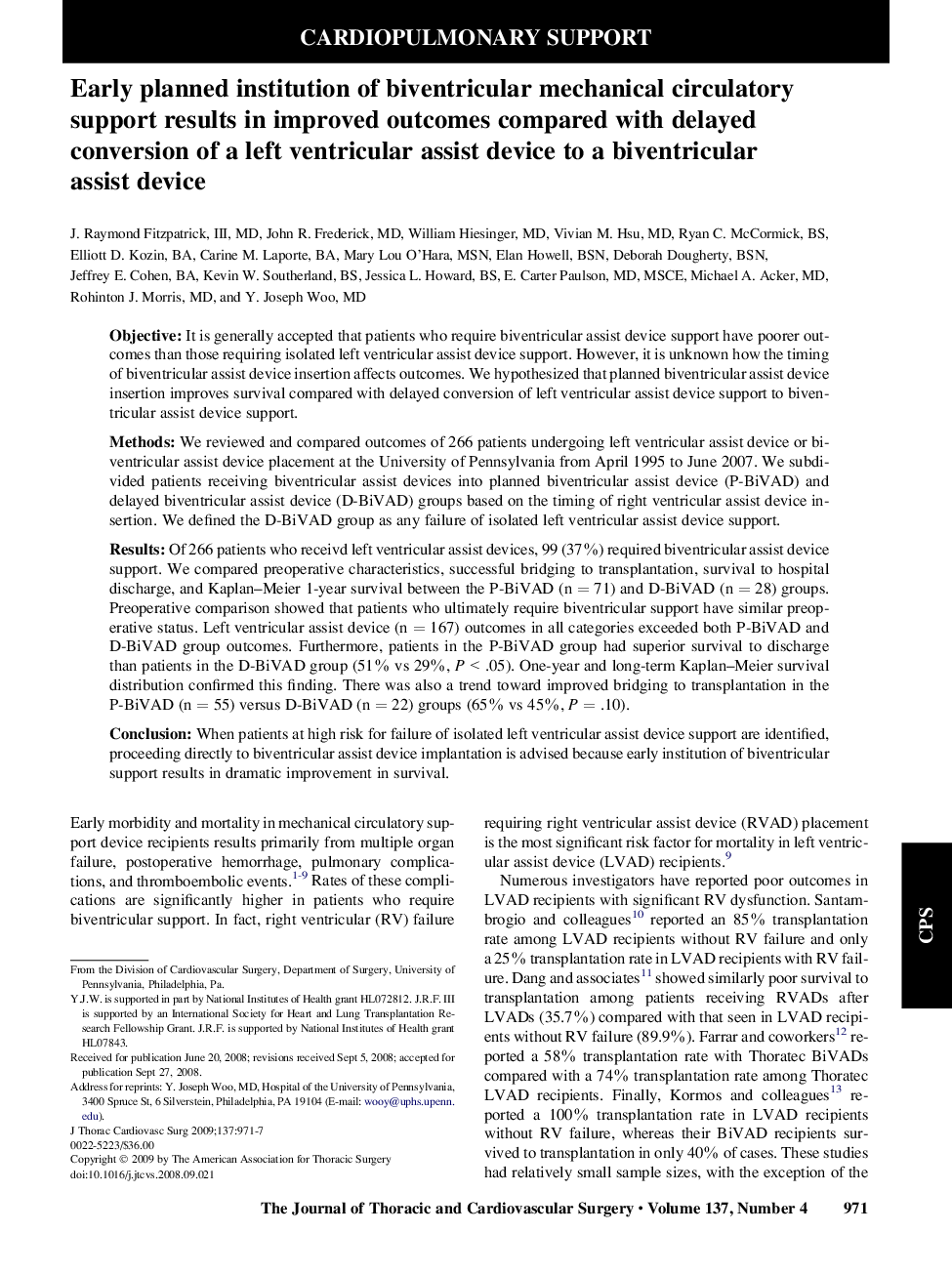| کد مقاله | کد نشریه | سال انتشار | مقاله انگلیسی | نسخه تمام متن |
|---|---|---|---|---|
| 2982391 | 1578675 | 2009 | 7 صفحه PDF | دانلود رایگان |

ObjectiveIt is generally accepted that patients who require biventricular assist device support have poorer outcomes than those requiring isolated left ventricular assist device support. However, it is unknown how the timing of biventricular assist device insertion affects outcomes. We hypothesized that planned biventricular assist device insertion improves survival compared with delayed conversion of left ventricular assist device support to biventricular assist device support.MethodsWe reviewed and compared outcomes of 266 patients undergoing left ventricular assist device or biventricular assist device placement at the University of Pennsylvania from April 1995 to June 2007. We subdivided patients receiving biventricular assist devices into planned biventricular assist device (P-BiVAD) and delayed biventricular assist device (D-BiVAD) groups based on the timing of right ventricular assist device insertion. We defined the D-BiVAD group as any failure of isolated left ventricular assist device support.ResultsOf 266 patients who receivd left ventricular assist devices, 99 (37%) required biventricular assist device support. We compared preoperative characteristics, successful bridging to transplantation, survival to hospital discharge, and Kaplan–Meier 1-year survival between the P-BiVAD (n = 71) and D-BiVAD (n = 28) groups. Preoperative comparison showed that patients who ultimately require biventricular support have similar preoperative status. Left ventricular assist device (n = 167) outcomes in all categories exceeded both P-BiVAD and D-BiVAD group outcomes. Furthermore, patients in the P-BiVAD group had superior survival to discharge than patients in the D-BiVAD group (51% vs 29%, P < .05). One-year and long-term Kaplan–Meier survival distribution confirmed this finding. There was also a trend toward improved bridging to transplantation in the P-BiVAD (n = 55) versus D-BiVAD (n = 22) groups (65% vs 45%, P = .10).ConclusionWhen patients at high risk for failure of isolated left ventricular assist device support are identified, proceeding directly to biventricular assist device implantation is advised because early institution of biventricular support results in dramatic improvement in survival.
Journal: The Journal of Thoracic and Cardiovascular Surgery - Volume 137, Issue 4, April 2009, Pages 971–977